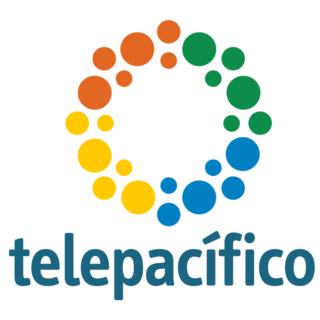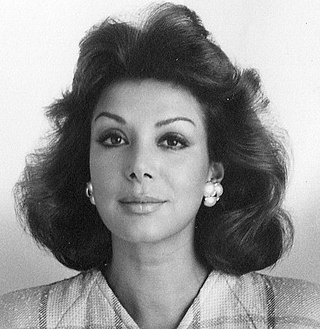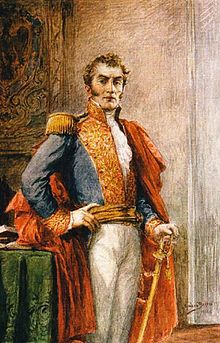
Silvia Milena Corzo Pinto is a Colombian lawyer and presenter.

Caracol Televisión is a Colombian free-to-air television network owned by Caracol Medios, a unit of Grupo Valorem. It is one of the leading private TV networks in Colombia, alongside Canal RCN and Canal 1. The network distributes and produces 5,000+ programs and has aired in more than 80 countries.

RCN Televisión, branded as Canal RCN is a Colombian free-to-air television network owned by Organización Ardila Lülle. It was founded as a television content production company on March 23, 1967, and officially launched as an independent channel on July 10, 1998. Its main shareholder is Carlos Ardila Lülle. It produced Yo soy Betty, la fea, one of the most successful Colombian telenovelas.

Telepacífico is a Colombian regional public television network, created in 1986 as the city of Cali celebrated its 450th anniversary. It started broadcasting on July 3, 1988, with 24 weekly programming hours. It was the third regional network in the country, after Teleantioquia, created in 1985, and Telecaribe, created in 1986.

Telecaribe is a regional television network for the Caribbean region of Colombia.
José Yamid Amat Ruiz is a Colombian journalist.
Todelar is a system of radio stations that covers all of Colombia, founded in 1953 by Bernardo Tobón de la Roche. Its flagship station is La Voz de Bogotá since 2017. Radio Continental, also in Bogotá, had this role until 2016, having joined Todelar in 1957.

RTI Colombia, also known as Radio Televisión Interamericana, is a Colombian television production company and former programadora. It aired 14.5 hours per week of programming in 1993. In the 1990s, as a programadora, it was a member of OTI Colombia, a coalition that included Producciones PUNCH, Producciones JES, RCN Television, Caracol Televisión and Datos y Mensajes.

Television in Colombia or Colombian television is a media of Colombia. It is characterized for broadcasting telenovelas, series, game shows and TV news. Until 1998 it was a state monopoly. There are two privately owned TV networks and three state-owned TV networks with national coverage, as well as six regional TV networks and dozens of local TV stations. There are numerous cable TV companies operating in Colombia under each Colombian department statutes. These cable companies also develop their own channels, in addition to a variety of international channels. Television in Colombia has always relied on technological advancements from developed countries importing almost all the equipment.

Teletigre, also known as TV-9 TeleBogotá, is Colombia's first private television channel, founded by journalist and politician Consuelo Salgar de Montejo, who won a state bid against Caracol TV, RTI Colombia, and Producciones Punch. It is now operating as a Digital Channel through Youtube and is owned by "La Casa Editorial el Bogotano."
Canal Trece Is a Colombian free-to-air television network with regional coverage, specialized in cultural programming. Being a public television station, it is owned by the Colombian Government and its operations are managed by the RTVC Public Media System. The headquarters of the channel are located in Bogotá.

Canal 1 is a Colombian state-owned television channel. It is owned by the Government of Colombia and managed by Phoenix Media, a private company. From 1957 to 2017, the channel was administered by private programming companies known as programadoras, which bid for time slots with the Colombian state.

Virginia Vallejo García is a Colombian author, journalist, television and radio director, anchorwoman, model, columnist, socialite, and political asylee in the United States of America.
Humberto Rodríguez Calderón, known as El Gato, is a radio personality and television host. Rodríguez Calderón has hosted programs on Spanish language stations in the Dominican Republic, Colombia and Florida. In August 2011, he replaced Hernán Orjuela as the host of the long-running comedy program Sábados Felices.
In Colombian broadcasting, programadoras are companies that produce television programs, especially for the public-commercial Canal Uno.

Gustavo Ernesto Gómez Córdoba is a Colombian journalist and writer, whose work has been recognized with awards including Journalist of the Year in 2010. He began working in Cromos magazine in the 1990s and became prominent as a national radio broadcaster starting in 2005, when he joins the team of 6AM Hoy x Hoy from Caracol Radio. He also writes for SoHo magazine and another significant media.
Media ownership in Colombia is highly concentrated. The four largest newspapers together account for two-thirds of total readership, and the two largest television channels have about two-thirds of the market and 78% of advertising revenues, according to a 2016 study by Reporters Without Borders and the Colombian Federation of Journalists.

Jorge Alfredo Vargas Angulo is a Colombian journalist and news presenter.
Judith Sarmiento Granada is a Colombian lawyer and journalist known nationally for her work in various radio and television media since the 1970s.

Laura Janeth Acuña Ayala is a Colombian lawyer, television presenter, and model. She was the presenter of the Muy Buenos Días magazine of RCN Televisión and presenter of the RCN Show of Noticias RCN in the 5:30 a.m. broadcast. In 2021, she participated in the musical program La Voz Kids on Caracol Televisión.















